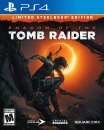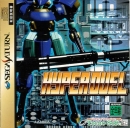| Soundwave said: Companies like Apple and Google get good pricing on these components too, these parts of still reserved for those companies' higher end flagship products. Nintendo isn't moving some special number of hardware relative to those companies (nor is any video game maker). Things like LPDDR5X RAM, this kind of a GPU, a screen that large, a big chunk of UFS 3.1 storage are still not dirt cheap components. 1536 CUDA cores 8-inch 1080p screen 12GB LPDDR5X RAM New dock w/fan (notable more because every system is going to require a dock in that case) 256GB UFS 3.1 storage New magnetic locking Joycons. I dunno. I don't see it. All that for $50 more than an OLED Switch, great if they want to do it, I just doubt it. Nintendo has made pricier hardware choices here than they had to. Why a larger 1080p screen, 720p 7 inches was good enough. Why 1536 CUDA cores that's an awful lot of SMs if they want to low clock like a few people claim you could've used fewer CUDA cores and had a cheaper chip and still gotten the same performance by just clocking up a bit, why LPDDR5X RAM instead of cheaper, older LPDDR5 is also an eye raiser. Why 256GB UFS 3.1 when they could've used 2.2 UFS 3 is also a bit of a choice if your goal is cheap, cheap, cheap. They're making a lot of choices here I think based on giving the hardware a pretty decent amount of performance, like they could have opted for 128GB storage, but 256GB basically ensures every kind of modern game from 3rd parties can install directly onto every system's internal storage. The design choices here just don't scream "budget product!". They purposely priced the Switch OLED at $350 which was already more than the XBox Series S and only $50 less than the disc less PS5. And the Switch OLED is selling great. So that kinda throws a wrench in the whole line of thinking IMO. The current best selling Switch 1 model is $350. The truth is, Nintendo's hardware is majority bought by adults with large disposable income, children are part of the equation but no longer the driving demo. Teenagers and young adults who have grown up with previous Nintendo consoles are the driver audience. The days of dirt cheap GBA/DS hardware and dirt cheap pricing are over. Maybe you'll get a cheap Switch 2 Lite eventually, but I don't think that's coming any time soon. Even the Switch when it launched was the same price as the PS4, and that certainly did not hinder its sales. |
256GB of UFS 3.1 literally is cheap storage... This won't be dropping until 2025 most likely remember... And UFS 4.0 exists... And UFS 5.0 is being developed.
It is better than the half duplex emmc, but still does not hold a candle to nVME... But remember, it is only 256GB, which is tiny.
RAM wise... People comparing this to Apple has to be some kind of sick joke, Apple has always been tight on RAM.. Most recently, with the 8GB RAM debacle on devices that cost thousands. Speed wise it is not using the latest and greatest LPDDR5X chips that run at high speeds... Let alone GDDR6 or GDDR6X.
LPDDR5X does not carry much of a premium over LPDDR5, Nintendo and all other console manufacturers also need to forward cost project component prices, case in point Microsoft had cheaper RAM with the Xbox One, but towards the end of the generation the costs were higher as RAM manufacturing had switched to commodity DDR4, supply and demand dictate RAM prices.
GPU wise nVidia has never made an RTX GPU for desktops or laptops that is that slow.
Tegra wise it is fairly mid-range.
Perspective.
As for chip size... Sometimes clocking higher makes a chip large as you need dark silicon to insulate parts of the chip from leakage or adjust/pipelines and caches or even decouple parts of a chip to drive higher clock's. This makes a chip larger.
This happened when nVidia went from Maxwell to Pascal.

www.youtube.com/@Pemalite


























































